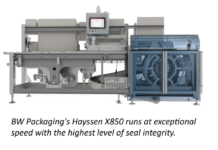Terming it as safe for consumption, the government of India has approved the continuation of the universal supply of fortified rice under all government welfare schemes, including Pradhan Mantri Garib Kalyan Anna Yojana (PMGKAY), in its present form, from July 2024 till December 2028.
The rice fortification initiative will continue as a central sector initiative with 100% funding by the government of India as part of PMGKAY (food subsidy), providing a unified institutional mechanism for implementation, the government said. The decision was made in line with the prime minister’s Independence Day address to ensure nutritional security in the country. The aim is to supply fortified rice throughout the targeted public distribution system (TPDS), other welfare schemes, integrated child development service (ICDS), PM Poshan in all states and union territories to address anemia and micronutrient deficiency.
In April 2022, the Cabinet Committee on Economic Affairs (CCEA) decided to implement the Rice fortification initiative throughout the country in a phased manner by March 2024. All three phases have been successfully completed.
According to the National Family Health Survey (NFHS-5) conducted between 2019 and 2021, anemia remains a widespread issue in India, affecting children, women, and men across various age groups and income levels. Besides iron deficiency, other vitamin and mineral deficiencies, such as Vitamin B12 and folic acid, also persist, impacting the overall health and productivity of the population.
The government says food fortification has been used globally as a safe and effective measure to address anemia and micronutrient malnutrition in the vulnerable population. “Rice is an ideal vehicle for supplying micronutrients in the Indian context as 65% of India’s population consumes rice as a staple food. Rice fortification involves the addition of fortified rice kernels (FRK) enriched with micronutrients such as iron, folic acid, Vitamin B 12 as per standards prescribed by FSSAI to regular custom-milled rice),” the government says.
Warning label removed
Dismissing concerns over the consumption of fortified rice, the government says scientific evidence says its consumption is safe for all including for individuals suffering from hemoglobinopathies such as thalassemia and sickle cell anemia.
Fortified rice packaging in India was initially required to carry a health advisory for individuals with thalassemia and sickle cell anemia, as per the Food Safety and Standards (Fortification of Foods) Regulations, 2018. The necessity of this advisory was questioned by a scientific committee, noting that no other country mandates such advisory labels on packaging. In response, the department of food and public distribution (DFPD) established a working group in 2023, to assess the safety of iron-fortified rice for people with these hemoglobinopathies.
The working group’s report concluded that current evidence does not support any safety concerns for such individuals. The iron intake from fortified rice is minimal compared to the iron absorbed during blood transfusions for thalassemia patients and is treated with chelation to manage iron overload. Furthermore, individuals with sickle cell anemia are unlikely to absorb excess iron due to naturally elevated levels of hepcidin, a hormone that regulates iron absorption, the government said.
This assessment was followed by an extensive review conducted by a committee chaired by the director general, Indian Council of Medical Research (ICMR). The committee, comprising experts in hematology, nutrition, and public health, conducted a thorough literature review on iron metabolism, the safety of iron doses from fortified rice, and global labeling practices.
Based on this global scientific review, the committee found no evidence suggesting that iron-fortified rice poses a health risk to individuals with these hemoglobinopathies.
A large community study in India, involving over 8,000 participants from tribal areas, indicated that nearly two-thirds of patients with sickle cell disease experienced iron deficiency. No specific evidence exists regarding harm from consuming fortified rice for sickle cell anemia or thalassemia.
“It is notable that organizations like WHO and the U.S. Food and Drug Administration (FDA) also do not mandate such advisories on packaging,” the government said.
In India, where large-scale distribution of fortified rice has already taken place in states like Jharkhand and Maharashtra, with more than 2,64,000 beneficiaries in each state, no adverse health outcomes related to iron overload have been reported. This further substantiates the committee’s recommendation to omit the advisory, it said.
The committee recommended removing the advisory, which FSSAI accepted. The advisory was officially removed in July 2024, following approval by the Food Authority in its 44th meeting.
Fortification program
India’s rice fortification program started in 2019 as a pilot program and scaled up in a 3 phased manner. Fortification is a globally recognized practice, and India follows guidelines aligned with the World Health Organization (WHO). According to WHO’s 2018 recommendations, rice fortification with iron is essential in countries where rice is a staple food. In India, with 65% of its population consuming rice daily, iron-fortified rice is particularly relevant.
Under the Pradhan Mantri Garib Kalyan Anna Yojana (PMGKAY), 520 lakh metric tons (LMT) of fortified rice is to be procured annually. There are currently 1,023 FRK manufacturers across the country, with an annual production capacity of 111 LMT, which significantly exceeds the 5.20 LMT required for the program. Additionally, there are 232 premix suppliers with a capacity of 75 LMT per annum, far surpassing the 0.104 LMT needed.
The ecosystem for rice fortification in India has expanded significantly. Of 30,000 operational rice mills, more than 21,000 have installed blending equipment, with a total capacity of 223 LMT of fortified rice per month. Testing infrastructure has also grown, with numerous NABL-accredited labs across India conducting rigorous quality checks on fortified rice.
Rice fortification is a well-established global practice, the government said. According to the Global Fortification Data Exchange, 18 countries actively allow rice fortification, 147 support salt fortification, 105 have adopted wheat flour fortification, 43 endorse oil fortification, and 21 promote the fortification of maize flour. Advisory labels for individuals with thalassemia or sickle cell anemia are not required in these countries, the government said.
IndiFoodBev — authentic, impactful and influential
An English-language food and beverage processing and packaging industry B2B platform in print and web, IndiFoodBev is in its third year of publication. It is said that the Indian food and beverage industries represent approximately US$ 900 billion in revenues which implies more than 20% of the country’s GDP. Eliminating the wastage on the farmside can help to deliver more protein to a higher number of the population apart from generating sizable exports. The savings in soil, seeds, water, fertilizer, energy and ultimately food and nutrition could be the most immense contribution that country is poised to make to the moderation of climate change.
To improve your marketing and grow sales to the food and beverage processing and packaging industry, talk to us. Our research and consulting company IppStar [www.ippstar.org] can assess your potential and addressable markets in light of the competition. We can discuss marketing, communication, and sales strategies for market entry and growth.
Suppliers and service providers with a strategy and budget for targeted marketing can discuss using our hybrid print, web, video, and social media channels to create brand recognition linked to market relevance. Our technical writers are ready to meet you and your customers for content.
The second largest producer of fruit and vegetables in the world is continuously expanding processing capacities and delivery systems with appropriate innovative technologies. We cover product and consumer trends, nutrition, processing, research, equipment and packaging from farm to thali. Get our 2025 media kit and recalibrate your role in this dynamic market. Enhance your visibility and relevance to existing markets and turn potential customers into conversations. Ask for a sample copy of our bi-monthly in print or our weekly IndiFoodBev eZine each Wednesday.
For editorial info@ippgroup.in — for advertisement ads1@ippgroup.in and for subscriptions subscription@ippgroup.in
Naresh Khanna – 10 February 2025
Subscribe Now












